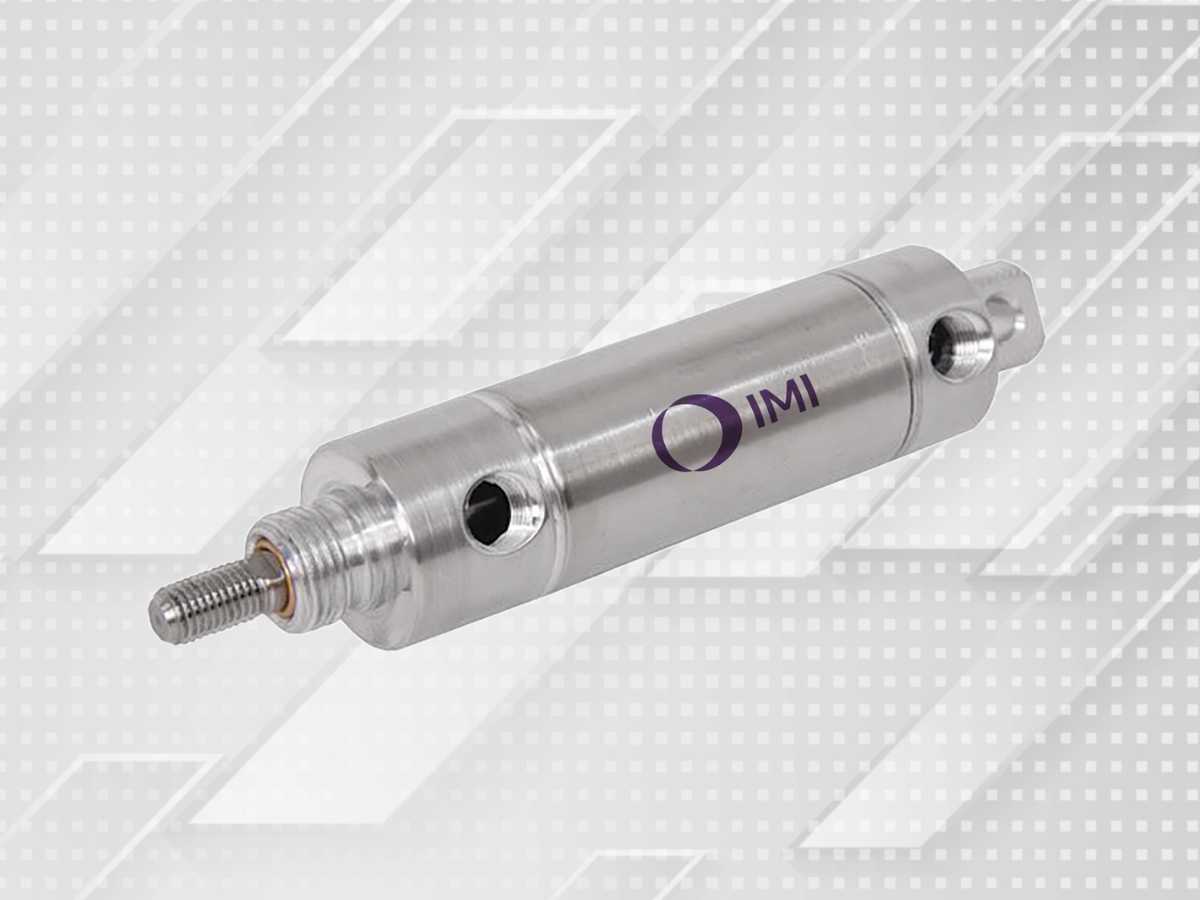5 Best Practices for Maintaining IMI Bimba Air Cylinders
IMI Bimba cylinders, also known as pneumatic actuators or air cylinders, convert compressed air into energy that is used to move components in automated industrial equipment. This means these mechanical devices are critical to keeping production up and running in manufacturing facilities. While they are typically robust and reliable, over time Bimba air cylinders may eventually experience wear. However, establishing a schedule for inspection and routine preventive maintenance can help extend the life of your Bimba pneumatic cylinders and enhance the performance of automated machinery.
This blog will provide five best practices for maintaining IMI Bimba actuators and present a troubleshooting guide for when actuator service may be necessary.

What is a Bimba Air Cylinder?
IMI Bimba air cylinders are mechanical devices that use compressed air energy to produce linear motion and force, enabling lifting, sorting, pushing and clamping motions in manufacturing, packaging and automated industrial equipment. In operation, compressed air is directed into the Bimba pneumatic cylinder, which causes a piston to move, creating the necessary linear motion of the machinery.
5 Best Practices for Maintaining Bimba Cylinders
Because they are responsible for keeping automated equipment functional, ensuring the reliability of air cylinders is essential. Performing routine inspections, and tending to issues before they result in failure are essential to maintaining the life of your Bimba actuators, as well as the performance of automated equipment.
Here are five best practices for keeping Bimba pneumatic cylinders in optimal condition:
- Perform routine inspections: Pneumatic actuators rely on seals to prevent air loss. These seals are critical to the performance of the IMI Bimba air cylinder, so seals and gaskets should be inspected regularly for cracks and leaks, which can negatively impact the operation of the cylinder and the equipment. If leaks or cracks are found, the seals or gaskets should be replaced on repairable type cylinders, entire cylinder replacement is necessary for the non-repairable type. While inspecting the Bimba cylinder, be sure to examine the cylinder rod and tube for signs of wear, damage or corrosion. Also check for corrosion on fittings, as contaminants can be introduced into the cylinder via fittings and compressed air supply piping.
- Replace worn seals (Repairable type): If leaks or cracks are found during inspection, seals and gaskets should be replaced following Bimba’s disassembly and assembly instructions for the specific cylinder you’re working on, disassemble the cylinder, remove all components and wipe away any remaining grease or debris. The seals should be replaced with new ones, ensuring that they are installed properly. Use the recommended lubricant and torque specifications during reassembly. This will help restore efficiency and functionality.
- Replace worn cylinder components: Components such as clevis and pins, rod bushings, and alignment couplers may wear over time. If worn components are detected during an inspection, they should be replaced with components or a kit from an authorized Bimba cylinder distributor to ensure proper actuator service.
- Keep your Bimba cylinder clean: Poor compressed air quality will impact the performance of your air cylinder, so it’s important to supply clean and dry compressed air to prevent internal contamination. Consider options such as rod wipers, stainless steel components, or rod bellows to prevent external contamination in wet or dirty environments.
- Lubrication: Check the manufacturer’s recommendations or with your IMI Bimba cylinder distributor to see if your air cylinder application requires additional lubrication. Proper lubrication can help prevent premature wear of your Bimba cylinder by reducing friction between moving components in the actuator. If it does require lubrication, be sure to use the lubricant that is recommended foryour Bimba pneumatic cylinder. Compressed air line lubricators are recommended for some high cycle rate applications but will wash the grease applied at the factory out of the cylinder. It’s important to make sure the lubricator doesn’t run dry after its installed, if it does, the cylinder will run dry also. If it does not require additional lubrication, it is best to avoid this practice, Bimba cylinders come preassembled with a high quality grease suited for most applications.
Please note, before performing any inspection, cleaning or preventive maintenance on a pneumatic system, be sure the power supply is turned off and that any remaining compressed air is released from the system to ensure safety of the technician and equipment.
Common Reasons Actuator Service May be Needed
Although IMI Bimba air cylinders are robust and reliable, they can encounter snags in performance. And, when issues occur, it can lead to downtime, loss of productivity and increased maintenance expenses. Troubleshooting can be time consuming, so to speed up the process, we’ve compiled a list of common reasons why a Bimba actuator may not be working.
| Air leakage | If your Bimba pneumatic cylinder is not holding position, it is likely because air is leaking through the piston seals, cylinder end seals, cushion seals or rod seals. You may also hear a hissing noise coming from the cylinder. To remedy the issue, you’ll need to find the leak and replace worn seals, tighten the connections or replace the cylinder. |
| Low force or slow | When a Bimba cylinder is sluggish or does not provide the necessary force, insufficient airflow or pressure may be the cause. Ensure the compressed air pressure is not set below specification for the actuator and adjust if needed. Also, be sure the control valve and air distribution lines are not clogged or leaking, as that may limit airflow to the cylinder. |
| Cylinder misalignment | To function properly, the Bimba air cylinder must be properly aligned as misalignment causes uneven wear, increased friction and, potentially, failure. If any of these issues are detected, make sure the cylinder is correctly positioned and that it is suitable for the load and speed of the application. It may be necessary to realign the cylinder or install external guide bearings or alignment couplers. |
| Improper lubrication | Increased friction of the Bimba cylinder may be due to improper lubrication. Bimba cylinders are lubricated with a high quality grease at the factory, but if improper lubrication is suspected, check with a Bimba distributor to determine if your cylinder needs additional lubrication. |
| Contaminants | If dust, dirt or other contaminants enter the Bimba air cylinder, they can damage the device’s seals, pistons and internals. While the cylinder should be cleaned as part of a preventive maintenance plan, regular service of the air compressor, including cleaning the coolers, oil and separator element replacement, air and oil filter changes are necessary. As well as regular service on the compressed air treatment equipment such dryers, line filters and drains will help prevent contaminants from entering the pneumatic cylinder. |
As more equipment becomes automated, IMI Bimba air cylinders will play a role in ensuring optimal operation of the machinery. For this reason, it’s critical to become familiar with best maintenance practices, as well as potential causes of trouble, to ensure proper actuator service. For more information, contact JHFOSTER, a Tavoron company, a Bimba cylinder distributor, and authority on automation and compressed air systems.
